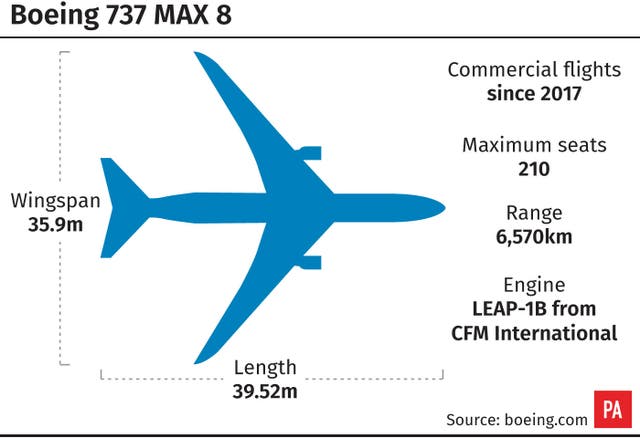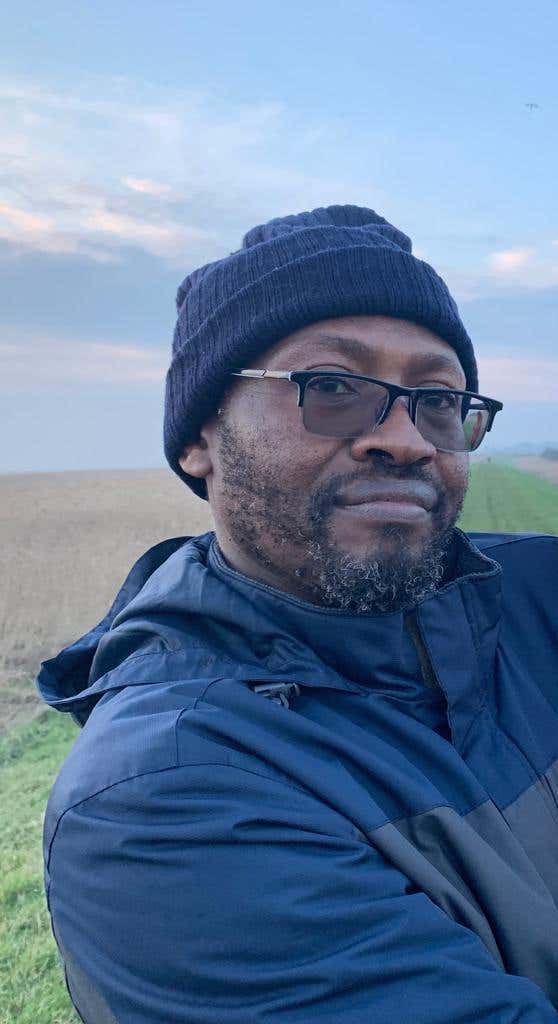Boeing 737 model involved in Ethiopia crash still flying despite concerns
Operators including Norwegian and Tui are still using Boeing’s 737 Max 8 plane for flights out of the UK.

Airlines are continuing to operate flights out of the UK using Boeing’s 737 Max 8 plane despite suspensions around the globe amid safety concerns following the Ethiopian Airlines disaster which killed 157 people including nine Britons.
While Australia and South Korea followed Singapore, China and Indonesia in temporarily grounding the aircraft, some operators – including Norwegian and Tui – have so far refused to take action.
It comes as Boeing said it was “working closely” with the Federal Aviation Administration (FAA) “on development, planning and certification” of a software enhancement, due to be rolled out in the coming weeks.
Flight ET302 crashed shortly after taking off from Addis Ababa on Sunday morning, killing all 157 people on board.

It was the second deadly incident involving the new model of Boeing passenger jet in less than five months, prompting concerns over its safety.
Australia’s civil aviation safety authority said it had suspended the model flying into or out of the country.
The regulator’s boss, Shane Carmody, said in a statement: “This is a temporary suspension while we wait for more information to review the safety risks of continued operations of the Boeing 737 MAX to and from Australia.”

South Korean airline Eastar Jet also announced a suspension of operations using the model of aircraft involved in Ethiopian Airlines crash.
Singapore’s own air regulator also temporarily suspended operation of the Boeing 737 Max aircraft, variations of which number 7 to 10, into and out of its airports.
The move prohibits services to and from Changi Airport, one of the largest hubs in Southeast Asia, while Singapore Airlines subsidiary SilkAir said it was temporarily withdrawing its six Max 8s.
It comes after Chinese and Indonesian regulators ordered their airlines to temporarily ground their Boeing 737 Max 8 planes on Monday.
In the US, the FAA said the Boeing 737 Max 8s were safe to operate, although it had a team on the ground in Ethiopia to assist with the investigation and was continuously assessing the safety performance of the aircraft.
This process is validated for European Union countries by the European Aviation Safety Agency (Easa).
The UK Civil Aviation Authority said it was “liaising very closely” with Easa.
Several airlines serving UK airports are continuing to fly the model involved in the deadly crash.

Tui Airways has the only five 737 Max 8 aircraft operated by a UK-based airline, and is due to begin flying a sixth later this week.
Asked if the airline would take any action in response to the crash, a spokesman for parent company Tui said: “We have no indication that we can’t operate our 737 Max in a safe way like we do with all other planes in our network.”
Scandinavian airline Norwegian, which serves London Gatwick, Manchester and Edinburgh in the UK, has 18 Boeing 737 Max 8 aircraft.
A number of airlines have grounded their fleet of the model, including Royal Air Maroc, Cayman Airways, Mongolian Airlines and Comair, which is a British Airways franchise in southern Africa.
The passengers killed in Sunday’s crash came from 35 nations, including 32 from Kenya and 18 from Canada.

The British victims included “soft and loving” Joanna Toole, a United Nations worker from Devon, along with 55-year-old Joseph Waithaka, polar tourism expert Sarah Auffret, Sahra Hassan Said and Nasrudin Abdulkadir, a mother and son with dual Somali-British citizenship, and Sam Pegram, a 25-year-old from Lancashire.
Mr Pegram’s mother, Deborah, told the Lancashire Evening Post: “Sam was so looking forward to going to Nairobi. He loved the work he was doing.
“We can’t believe this has happened. We’re totally devastated.”
Staff at the University of York, where Mr Pegram completed a masters course in International Human Rights Law and Practice, said they were “heartbroken” as they passed on their condolences to his family and friends.
Dr Ioana Cismas, a senior lecturer, said Mr Pegram would be remembered as “an exceptionally bright student, committed to human rights and humanitarianism, and as a profoundly kind soul”.
Hilary Layton, director of global engagement, added: “He was a lovely colleague and supremely talented and did some really valuable work in promoting the university’s work in Sub-Saharan Africa. We were sure he would go far in his career and make a difference.”
United Nations worker Ms Toole, 36, was the first British victim to be named.
Ms Toole’s father, Adrian, from Exmouth, told the DevonLive website that she was “genuinely one of those people who you never hear a bad word about”.
Mr Waithaka, 55, who lived in Hull for a decade before moving back to his native Kenya, also died in the crash, his son said.
The one Irish victim was named as Michael Ryan, a married father-of-two based in Rome with the UN’s World Food Programme, which distributes rations to people in need.
As many as 19 UN workers were feared to have been killed in the crash, the number being so high because of its environmental forum which started on Monday.





